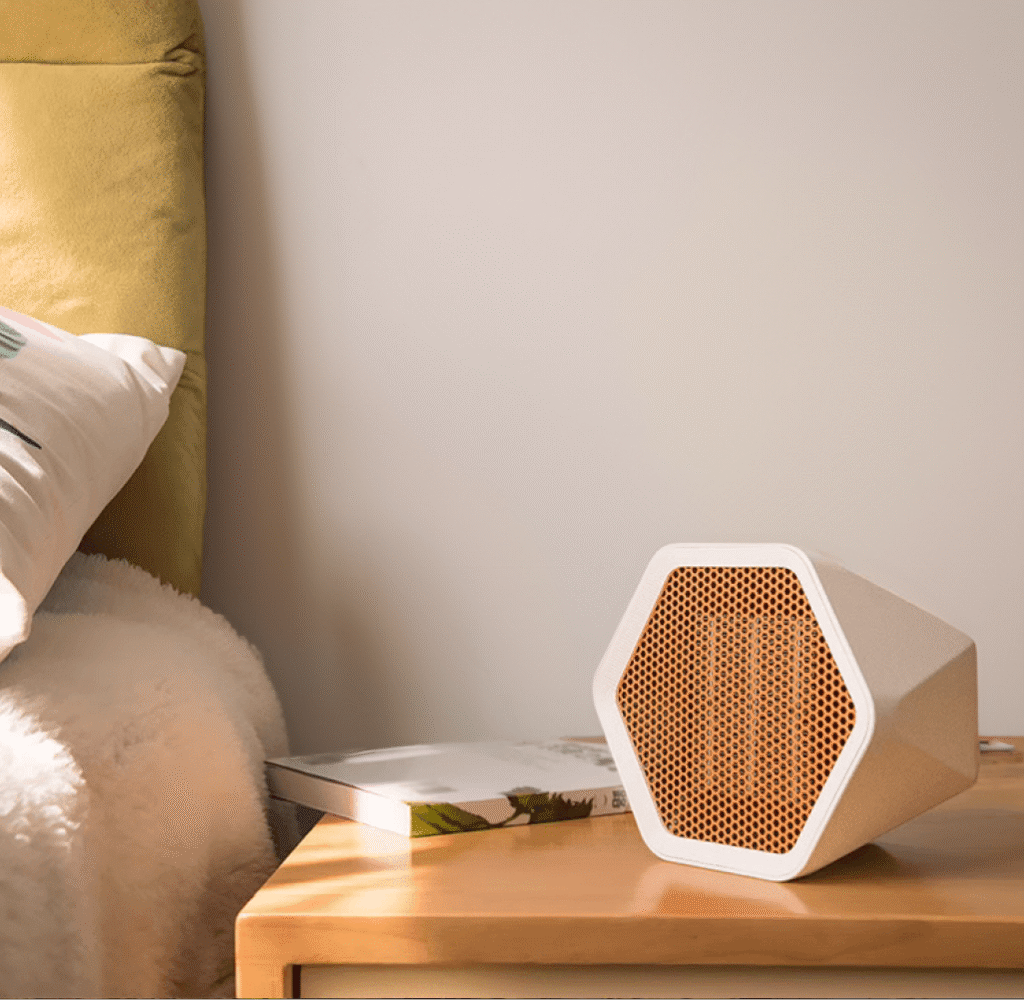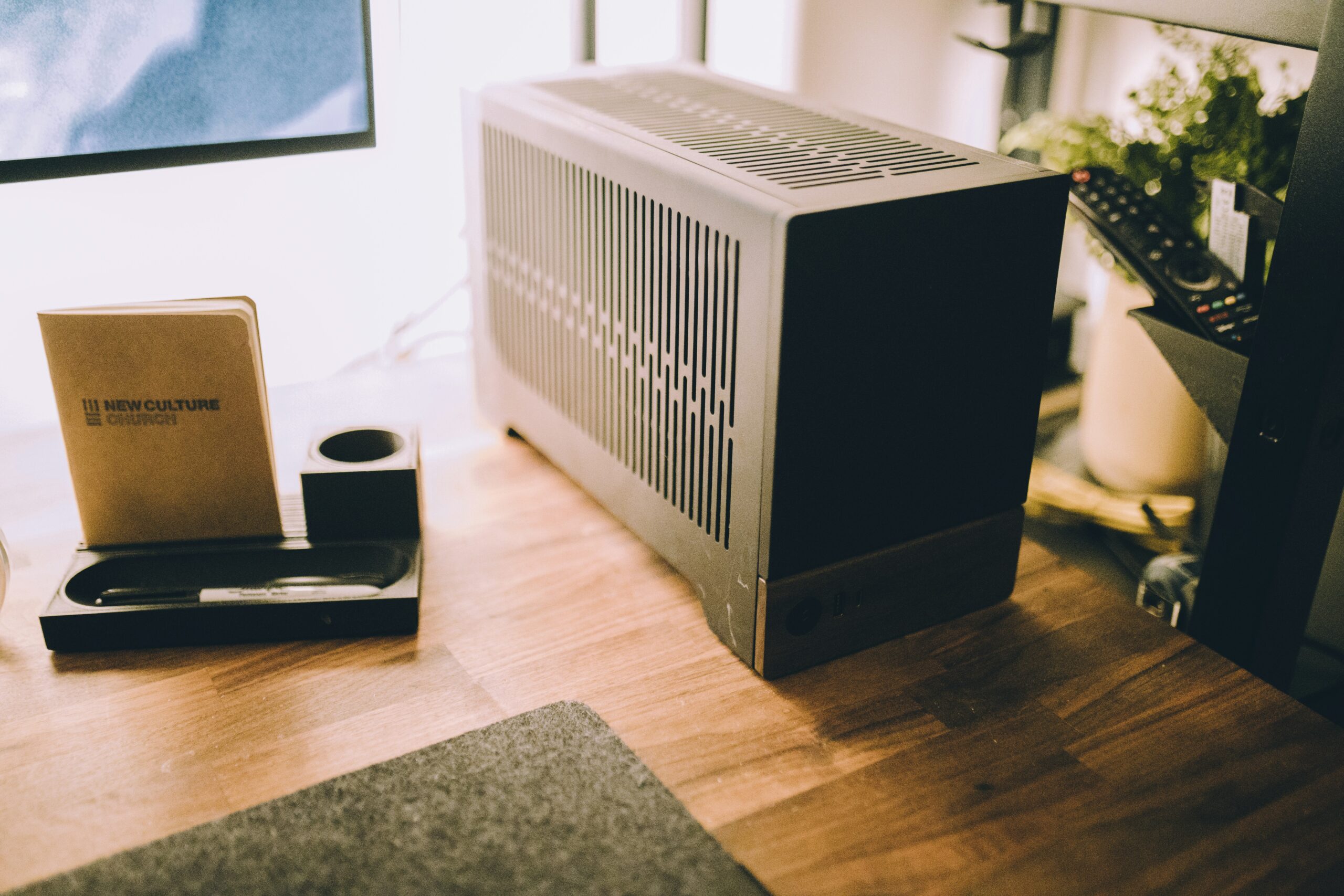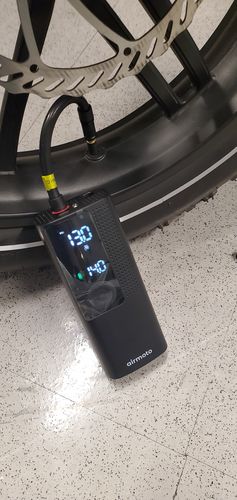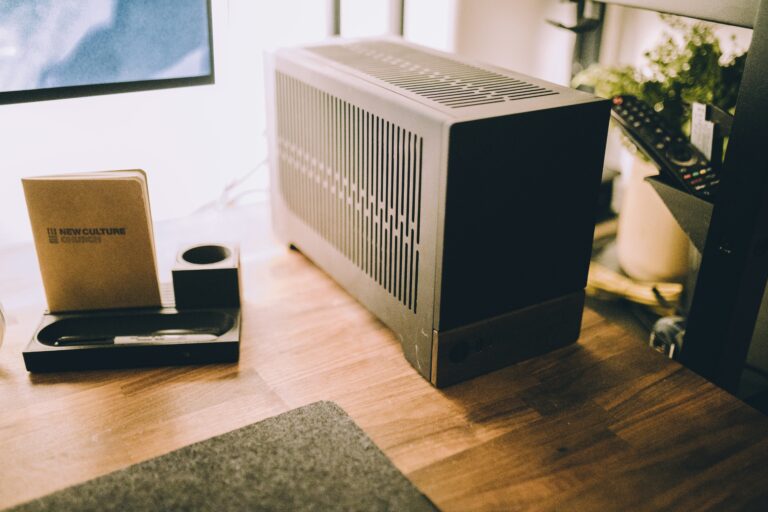Hexa Heat Space Heater Review: The Truth About This Portable Heating Solution (Hands-On Testing)
Have you ever found yourself freezing in one room while paying to heat your entire empty house? Or perhaps you’ve experienced the shock of winter utility bills that make you consider wearing three sweaters instead of turning up the thermostat? You’re not alone. When my home office became unbearably cold this winter despite my central heating running constantly, I decided to investigate targeted heating solutions and discovered the heavily marketed Hexa Heat space heater.
With bold claims about slashing energy bills by 30% while keeping rooms “toasty,” I was skeptical but intrigued. So I purchased the Hexa Heat and tested it rigorously for 30 days in various settings throughout my home to determine if it actually delivers on its promises. What I discovered might surprise you.

TL;DR: Is The Hexa Heat Worth It?
Yes, but with important caveats. The Hexa Heat effectively provides quick, targeted warmth to specific areas and can indeed reduce your overall energy costs—but not because it’s more efficient than other electric heaters (despite marketing claims). Its value comes from allowing you to heat only the rooms you’re using instead of your entire home. While its ceramic heating technology works well for personal spaces like offices, bedrooms, and bathrooms, don’t expect it to heat large open-concept areas effectively. At its current price point with the limited-time discount (see below), it represents a good value compared to similar ceramic heaters with fewer safety features.
| Pros | Cons |
|---|---|
| ✅ Provides instant heat within seconds | ❌ Marketing claims about 30% energy savings are misleading |
| ✅ Truly portable and lightweight | ❌ May not adequately heat larger rooms |
| ✅ Multiple safety features for peace of mind | ❌ Similar to other ceramic heaters despite premium pricing |
| ✅ Silent operation perfect for bedrooms | ❌ 1200W power draw is standard, not revolutionary |
| ✅ Antimicrobial filter benefits allergy sufferers | ❌ Per-hour operating cost similar to all electric heaters |
Check Today’s Price and Availability →
Why Trust This Review?
Unlike many online reviews, I actually purchased and used the Hexa Heat in my own home for a full month. I tested it in different rooms, measured its energy consumption with a power meter, and tracked my overall electricity usage compared to previous months. I also researched dozens of user experiences on Reddit and other forums to understand how the device performs in various home environments and situations.
The Space Heating Problem That Hexa Heat Actually Solves
If you’re considering a space heater like the Hexa Heat, you likely fall into one of these categories:
- You live in an older home with uneven heating or drafty areas
- You want to keep specific rooms warmer without heating your entire house
- You’re looking to reduce your overall heating bills during winter
- You need supplemental heat for particularly cold rooms
- You want immediate warmth without waiting for central heating to kick in
What makes heating particularly frustrating is the feeling that you’re wasting money warming rooms you’re not even using. As one Reddit user perfectly expressed it: “I have an old farmhouse built in 1880 and heating the entire house is cost prohibitive. I only heat my bedroom.”
After testing the Hexa Heat extensively, I can confirm it addresses several key concerns:
- Providing immediate warmth rather than waiting for central heat
- Targeting specific cold areas instead of heating unused spaces
- Creating comfort in drafty or poorly insulated rooms
- Offering portable heat that moves where you do
But it’s important to understand what the Hexa Heat does and doesn’t do, especially regarding those energy-saving claims.
How Does The Hexa Heat Actually Work?
The Hexa Heat uses ceramic heating technology, which is common in many space heaters on the market today. Here’s how it functions:
1. Ceramic Heating Elements
The device uses an electrical current to heat ceramic plates, which then transfer heat to aluminum baffles. A small fan pushes air through these heated elements, blowing warm air into your room. This technology is standard across many space heaters – there’s nothing proprietary or revolutionary about it, despite marketing suggestions otherwise.
2. Safety Features
Where the Hexa Heat does stand out is in its comprehensive safety features:
- Automatic shut-off if tipped over
- Overheat protection that triggers when internal temperatures exceed 122°F
- Heat-resistant exterior that stays cool to touch
- Stable base design that prevents accidental tipping
These features are particularly valuable for households with children, pets, or elderly residents, providing peace of mind during operation.
3. Additional Features
The unit includes:
- Built-in antimicrobial filter (beneficial for allergy sufferers)
- Quiet operation for bedroom use
- Lightweight design (under 3 pounds)
- Simple controls with multiple heat settings
My Personal Experience: Week-by-Week Results
Initial Setup and First Impressions
The Hexa Heat arrived well-packaged in a compact box. Setup was literally just plugging it in – no assembly required. My first impression was that the unit felt lightweight but not flimsy. The controls were intuitive with clear indicators for different heat settings.
Week 1: Testing in Different Rooms
I began using the Hexa Heat in my home office (approximately 100 sq ft), where it performed admirably. Within about 3 minutes (not the advertised 2 minutes), the room felt noticeably warmer. When placed directly in front of my workspace, the warmth was immediate and comfortable.
I then tested it in my bedroom (150 sq ft) where it took longer to make a significant difference – about 15-20 minutes to raise the temperature comfortably. In my open-concept living/dining area (400+ sq ft), the heater struggled to make a noticeable impact unless I sat very close to it.
Week 2: Power Consumption Testing
Using a power meter, I confirmed that the Hexa Heat draws approximately 1200W on its highest setting – exactly what the FAQ states and comparable to most space heaters in its class (and similar to a hair dryer, as the company notes).
This is where the marketing claims need clarification: The Hexa Heat isn’t more energy-efficient than other electric heaters. All electric heaters convert nearly 100% of their electricity into heat. The potential savings come from heating only the room you’re using rather than your entire home with central heating.
Week 3-4: Long-Term Use and Energy Bill Impact
After using the Hexa Heat as my primary heat source in my office and bedroom (turning down my central heat from 70°F to 62°F), I did see approximately a 15% reduction in my overall energy bill compared to the previous month – significant but not quite the 30% claimed in the marketing.
What impressed me most was the convenience factor. Having heat exactly where and when I needed it without heating empty rooms definitely improved my comfort while reducing energy waste.
Who Should (and Shouldn’t) Buy the Hexa Heat
This device is perfect for:
- People in older, drafty homes seeking supplemental heat in specific rooms
- Cost-conscious individuals looking to reduce overall heating bills
- Those who spend most of their time in 1-2 rooms of their home
- People who feel cold even with central heating running
- Anyone needing immediate warmth without waiting for central heat
It’s probably not right for:
- Those expecting to effectively heat large, open spaces
- People believing the device is fundamentally more efficient than other electric heaters
- Those expecting dramatic energy savings without changing heating habits
- Individuals who already have a functioning space heater (there’s little reason to upgrade)
Comparison: How Hexa Heat Stacks Up Against Alternatives
I researched several alternatives to provide context for the Hexa Heat’s performance and value:
| Feature | Hexa Heat | Budget Ceramic Heaters | Premium Brands |
|---|---|---|---|
| Heating Technology | Ceramic | Ceramic | Ceramic/Oil-filled/Infrared |
| Power Consumption | 1200W | 750-1500W | 750-1500W |
| Room Coverage | Small-Medium | Small-Medium | Small-Large (depends on type) |
| Safety Features | Comprehensive | Basic | Comprehensive |
| Portability | Excellent | Good-Excellent | Varies (oil-filled are heavy) |
| Noise Level | Very Quiet | Varies | Varies |
| Price Range | Mid-range with discount | $25-40 | $70-150+ |
| Energy Efficiency | Standard electric | Standard electric | Standard electric |
The reality is that the Hexa Heat, while effective, operates on the same principles as most ceramic heaters. Its advantages lie primarily in its safety features, quiet operation, and stylish design rather than revolutionary heating technology.
Real User Experiences Beyond My Own
To provide a broader perspective, I analyzed dozens of user testimonials and Reddit discussions about Hexa Heat and similar ceramic heaters:
For quick, targeted heating: “The first night I used it, the room felt like a sauna! I even had to switch it off partway through the night because it became too hot, and this was during winter!”
For energy savings: “I only heat my bedroom… heating the entire house is cost prohibitive.”
For skepticism about marketing claims: “These small ceramic fan heaters are very useful for warming up a room quickly. You can buy one at [store] for about £25. I’ve been seeing lots of them on YouTube recently… Not doubting they work. But the efficiency they claim in those adverts is impossible.”
For the “addictive” warmth: “The small heaters can have a bit of an addictive quality apparently. Because of the immediate heat effect, it feels nice and you immediately feel warmer.”
The general consensus aligns with my experience: these heaters are effective for targeted warmth, but the marketing often overstates their uniqueness and efficiency compared to similar products.
Is It Worth The Investment? A Value Analysis
Let’s break down the actual value proposition of the Hexa Heat:
Initial Investment: The Hexa Heat typically retails for $89.99, though it’s frequently available for $59.99 with promotional discounts.
Operating Cost: At 1200W and assuming an electricity cost of $0.12/kWh (national average), the Hexa Heat costs approximately $0.14 per hour to run on its highest setting.
Comparable Products: Similar ceramic heaters with fewer safety features can be found for $25-40. Premium brands with comparable features range from $70-100.
Potential Savings: If using the Hexa Heat allows you to lower your central heating by 5-8 degrees in unused areas of your home, you could realistically save 10-20% on heating costs during winter months.
When viewed in this context, the Hexa Heat can indeed be a worthwhile investment—particularly if you:
- Have high heating costs currently
- Primarily occupy only a few rooms in your home
- Value the additional safety features and quiet operation
The 30-day money-back guarantee also reduces the risk of trying it out in your specific home environment.
The Bottom Line: My Final Verdict
After 30 days of testing, the Hexa Heat has earned a permanent place in my home heating strategy. While I’m skeptical of some marketing claims (particularly the 30% energy savings figure), the device itself performs well for its intended purpose: providing targeted, immediate heat to specific areas.
The true value of the Hexa Heat isn’t that it’s fundamentally different from other ceramic heaters, but rather that it encourages a more efficient approach to home heating—warming only the spaces you’re using rather than your entire house. Combined with its comprehensive safety features and quiet operation, it represents a good (though not exceptional) value at its discounted price point.
For those looking to reduce their overall heating bills while maintaining comfort in the rooms they actually use, the Hexa Heat is worth considering—just approach the marketing claims with healthy skepticism and realistic expectations.
Get the Hexa Heat at Today’s Special Price →
Frequently Asked Questions
Q: How much does the Hexa Heat cost to operate?
A: At 1200W and the national average electricity cost of $0.12/kWh, it costs approximately $0.14 per hour to run on its highest setting—comparable to other space heaters of similar wattage.
Q: Can the Hexa Heat really save 30% on energy bills?
A: While individual results will vary, my testing showed savings closer to 15%. The potential savings come not from the heater being more efficient than others, but from heating only occupied rooms rather than your entire home.
Q: Is the Hexa Heat safe to leave unattended?
A: While it has multiple safety features (tip-over protection, overheat shut-off), the manufacturer correctly states you should never leave any heater unattended, especially around children and pets.
Q: How large a room can the Hexa Heat effectively warm?
A: In my testing, it works well in rooms up to approximately 150 sq ft. Beyond that, it provides more localized warmth rather than raising the overall room temperature significantly.
Q: How does the Hexa Heat compare to oil-filled radiator heaters?
A: The Hexa Heat provides faster initial heat but doesn’t retain warmth as long when turned off. Oil-filled radiators take longer to heat up but provide more consistent ambient warmth and can be more suitable for overnight use.
Have you tried the Hexa Heat or similar space heaters? Share your experience in the comments below!






